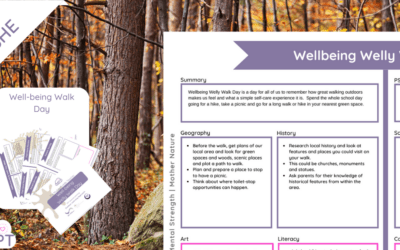Inspire creativity, calm, and curiosity with Outdoor Ideas for Young Minds (Mindful)—a curated collection of engaging...
KS2 Anti-Bullying Week Ideas Pack
Nov 12, 2024
Empower KS2 students to embrace kindness, empathy, and inclusion with our KS2 Anti-Bullying Week Ideas Pack, inspired...
Wellbeing Cards (Emotions & Feelings)
Jan 2, 2024
What does this resource include? Wellbeing Cards (Emotions & Feelings) include: 30 wellbeing cards 1 x handbook...
Odd Sock Day Lesson Ideas
Nov 20, 2023
What does this resource include? 1 x Lesson Plan for Odd Sock Day Lesson Ideas How can I use this resource? Use Odd...
Well-being Welly Walk Day
Nov 15, 2023
What does this Well-being Welly Walk Pack include? A full day of activities for every curriculum area 1 x parent...
Nature Colour In Mindfulness
Mar 8, 2022
Use this nature colour in activity to help connect children with nature while being mindful.
Outdoor Wellbeing – Worry Leaves Template
Mar 8, 2022
Outdoor Wellbeing Ideas. Use this template to help children with worries and to help them share these and blow them...
Muddy Yoga Display Cards
Feb 27, 2022
Muddy Yoga Growth Mindset (Full Pack)
Feb 27, 2022
Use Muddy Yoga Growth Mindset to add some muddy, outdoor wellbeing techniques to your PE and PSHE lessons
Muddy Yoga Growth Mindset
Feb 27, 2022
Use Muddy Yoga Growth Mindset (Free Pack) to take your yoga outside.
Bugs (Mini beasts) Mindfulness Colour In
Feb 27, 2022
The Benefits of Mindfulness Colouring Sheets for Children In an increasingly fast-paced and digitally-driven world,...
Children In Need : The Mad Cash Dash
Nov 17, 2021
Children In Need : The Mad Cash Dash This is a great event to also do as a whole school and add an element of...
Muddy Puddle Child Awards (Certificates Pack)
Nov 11, 2021
Muddy Puddle Child Awards (Certificates Pack) Reward the children's efforts outside! We are big believers in raising...
The Golden Stick (Team Bonding Game)
Nov 10, 2021
The Golden Stick (Team Bonding Game)
Muddy Man Hunt (Team Bonding Game)
Nov 10, 2021
Muddy Man Hunt (Team Bonding Game)
Capture the Muddy Flag (Team Bonding Game)
Nov 10, 2021
Capture the Muddy Flag (Team Bonding Game)
Crossing the Muddy River (Outdoor Team Building Game)
Nov 9, 2021
Crossing the Muddy River (Outdoor Team Building Game) ⇒Use Crossing the Muddy River (Outdoor Team Building Game) to...
Floor is Lava (Outdoor Team Building Game)
Nov 9, 2021
The Floor is Lava (Outdoor Team Building Game) ⇒Use The Floor is Lava (Outdoor Team Building Game) to take your...
New In
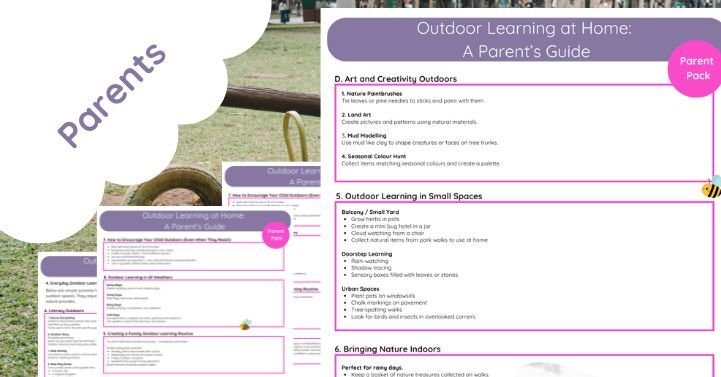
Outdoor Learning at Home: A Parent’s Guide
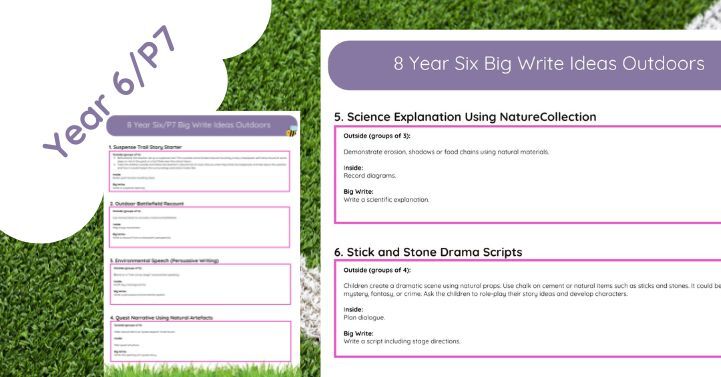
Year Six Big Write Ideas Outdoors

Year Five Big Write Ideas Outdoors

8 Year Four Big Write Ideas Outdoors

8 Year Three Big Write Ideas Outdoors
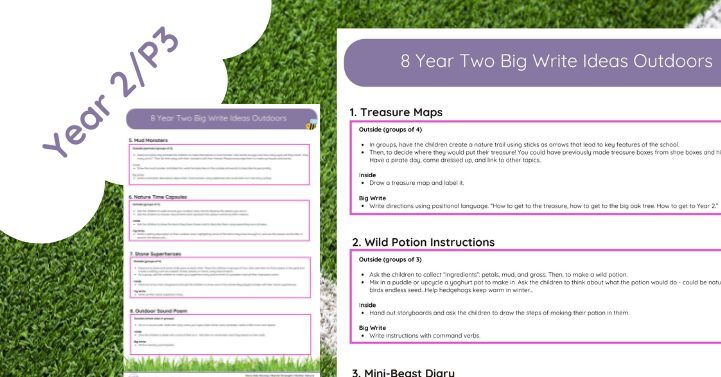
8 Year Two Big Write Ideas Outdoors

8 Year One Big Write Ideas Outdoors
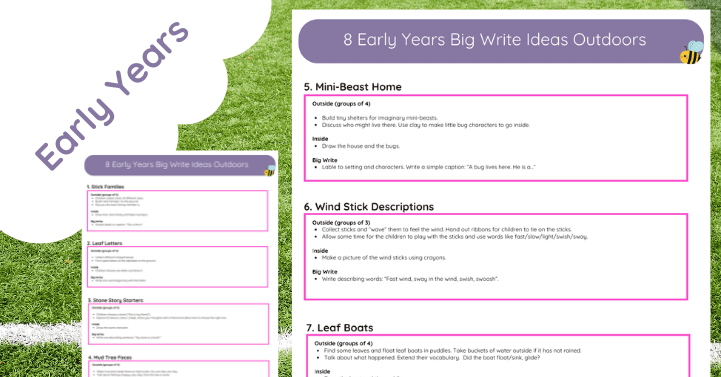
8 Early Years Big Write Ideas Outdoors

Open Day Outdoor Learning Parent Packs ( Muddy Trained Schools)







